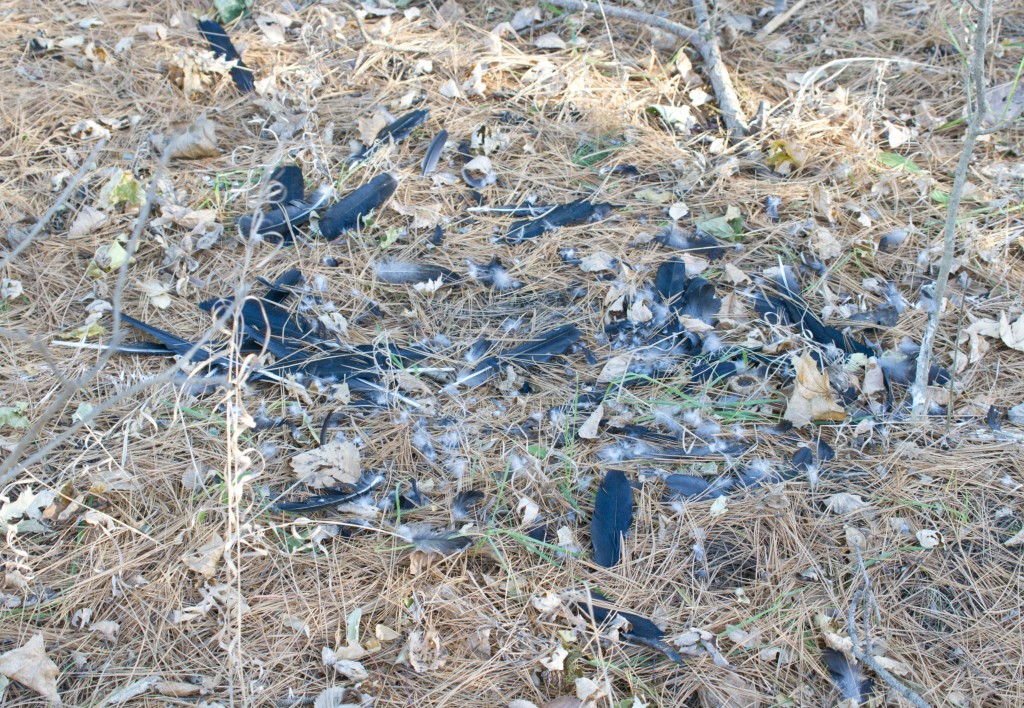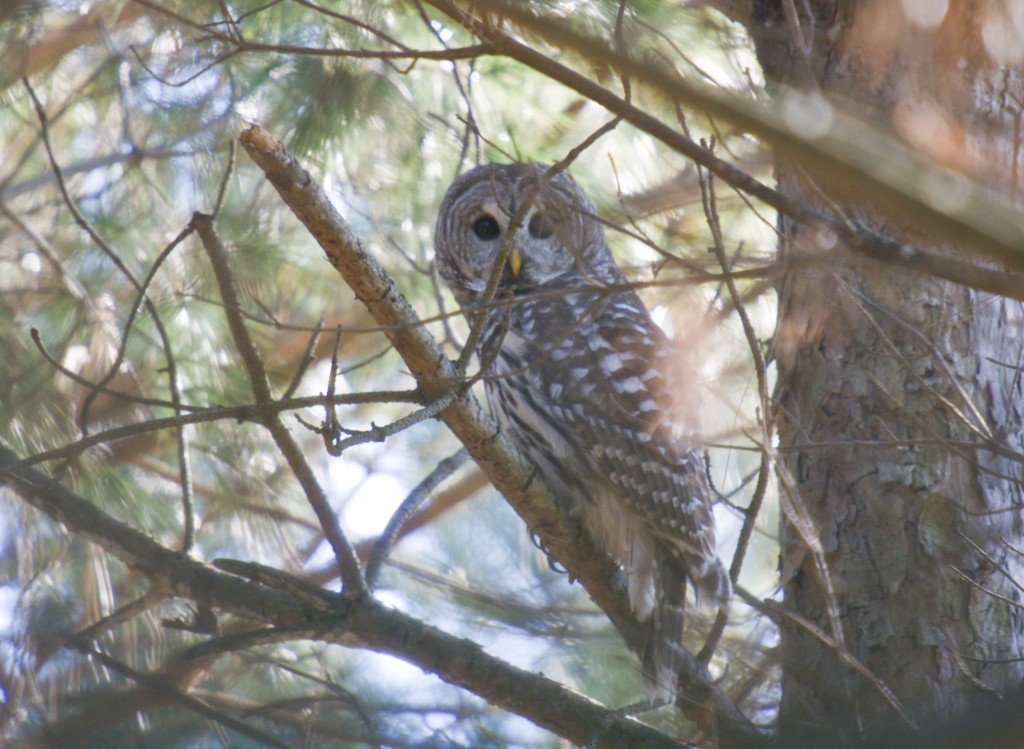Shorts and sandals came out again earlier this week, as high temperatures reached the low 70’s in early November for the third consecutive year. Even yesterday the high temperature reached the mid-60’s, but a northwestern cold front moved in around mid-afternoon, bringing with it some rain and causing temperatures to fall back into the 40’s and 50’s. Today the temperature should reach the 50s, but beginning tomorrow and continuing through next week high temperatures should hover between the high 30’s and mid-40’s with lows in the 20’s. With precipitation in the forecast this weekend, this means we’ll have a good chance of our first significant snow shower on Saturday before more sunny (albeit colder) days next week.
The coniferous forest in the northern part of the Linnaeus Arboretum is hosting owls right now. Last week, a Long-eared Owl was flushed from the cedars on the west side of the Jones Northern Forest Ponds on two separate occasions, and a Great Horned Owl was being mobbed by Blue Jays on two different days as well. On Monday of this week, a Barred Owl was roosting high in the pines on the western edge of the forest; I was able to capture a photo of the large owl before it flushed (and subsequently caused a ruckus among the Blue Jays). These owls are most likely present in the area due to this fall’s relative abundance of rodents and other small mammals (which make up the majority of their diets), and the conifers offer excellent shelter and concealment during daylight hours. Also on Monday, what looked like predation on an American Crow was observed on the northern edge of the same forest (see second photo below); my guess is that this was the work of a Great Horned Owl, our largest and most aggressive owl in southern Minnesota. If you want to try your luck in seeing one of these owls during the day, a good way is to first listen for any smaller birds (chickadees, nuthatches, jays) making frequent agitated calls; this often means that the birds are mobbing or harassing a roosting owl, so all you have to do is follow the noise. If you don’t hear any smaller birds, walk through the woods until you find “whitewash” on the ground or on some low tree branches; this paint-like substance is actually the owls’ scat and denotes the presence of a recently roosting owl in the area.

Probable Great Horned Owl predation on American Crow in coniferous forest in northern part of Arb, 11/8/10.
Here are some other highlights from this week in the Arb:
– American Basswoods still showing mostly green foliage behind Interpretive Center 11/11 (which means their leaves will probably just fall off instead of first turning yellow this late in the year)
– Crabapples, Ginkgoes, and Kentucky Coffeetrees throughout Arb and across campus completely devoid of foliage 11/10
– At least two Western Chorus Frogs vocalizing near Jones Northern Forest Ponds 11/8
– Late Clouded Sulphur flying above lawn south of Jim Gilbert Teaching Pond 11/8
